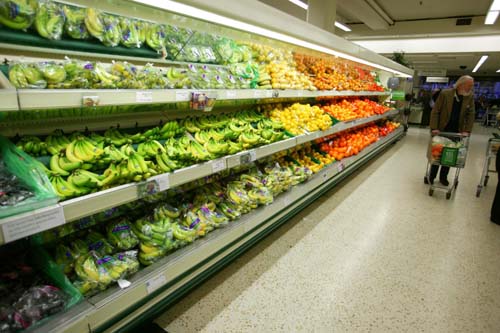Hey, what’s this a label for?
Before you leave your comment…read the below.
Presented without comment:
Do people think 250 calories is a little or a lot for a candy bar? According to Cornell researcher Jonathon Schuldt and 93 university students, it depends on the color of the label.
Schuldt asked the group to imagine that they were hungry while waiting in a grocery checkout lane. They were then shown an image of a candy bar with a Photoshopped red or a green calorie label. When asked about factors that might affect their decision to buy, the students perceived the green-labeled bar as more healthful than the red one, despite identical caloric information.
Schuldt also conducted a similar experiment with online participants. They were shown candy that had either green or white labels and asked to rate how healthiness factored into their decision about which foods to buy and eat. Participants who placed a higher importance on healthy eating perceived the white-labeled candy bar as less healthful — but no such pattern appeared when the candy bar had a green label, again despite identical displaying calorie numbers.
According to Schuldt, “The green calorie labels buffer relatively poor nutrition foods from appearing less healthful among those especially concerned with healthy eating.” [source]
When I read this, all I can think of is the fact that this is marketing, taking advantage of peoples inability to be comfortable in their own decisions.
I mean, as a designer, you become familiar with color psychology and how to use it to your advantage. That’s why hospital websites (and insurance companies, for that matter) cling to blues, banks cling to greens, sensuality and sexuality-based websites use lots of reds… the more examples I point out to you, the more obvious it may become.
Reds, yellows and greens all have very specific color psychology to us when used on products. Look in your kitchen, right now, and tell me what – other than, maybe, Lawry’s seasoned salt… and I know you have some in your kitchen because damn near everybody has it – has red all over it? Not much. Red always means stop, yellow means proceed with caution, and green means go HAM. Always has.
As consumers, we have to research what is best for ourselves, and be comfortable with those decisions. Letting pretty labeling, claims of “whole grains” or “now with vitamin X!,” and celebrity endorsements guide our judgment only steers us in the wrong direction.
Look at that label again – did you figure out what that label was for, despite all its greenery? 11g fat, 22g sugar, 220 calories… if I do the quick math in my head, 11×9 = 109 calories from fat, 22×4=88 calories from sugar alone…maybe 5g from protein?
Oh. It’s a candy bar with nuts. Green light, indeed.



2 comments
I am so guilty of falling for this marketing ploy. Now I often look at the ingredients. Then I look at the sugar and sodium content. Even though it might be low in calories, it could still be filled with edible garbage. My goal is to get vitamins and minerals from my foods.
For me 250 calories for a candy bar is a lot. Nutritionally it’s too much sugar. I will crash and burn and start to crave more since my is not getting the nutrition.
I am not sure what is going on with our food, or diet. When I speak to others in Asia, and Europe and South America. They eat a lot more calories yet they do walking and not a lot of strenuous exercise just daily chores.
I wonder if our stress level in America is dictating our metabolism levels. I know when I am not at work or in a stressful situation I lose weight without obsessing about it.
My intake daily is between 1200-1300 calories.
Comments are closed.